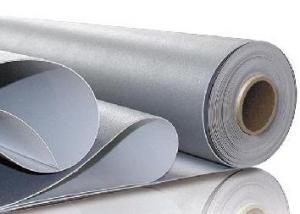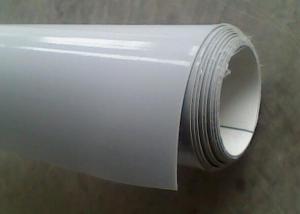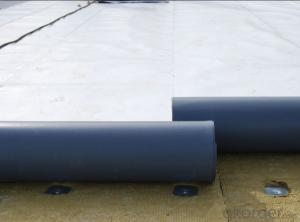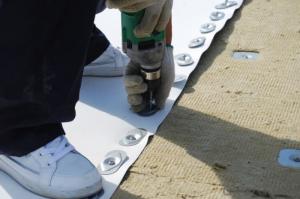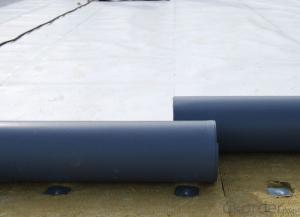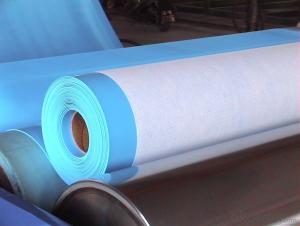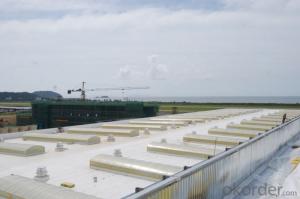0.5MM-2MM TPO Roofing Membrane Waterproof Material
- Loading Port:
- Qingdao Port
- Payment Terms:
- TT or LC
- Min Order Qty:
- 1*20'GP m²
- Supply Capability:
- 20Containers per Month m²/month
OKorder Service Pledge
OKorder Financial Service
You Might Also Like
Description Of 0.5MM-2MM TPO Roofing Membrane Waterproof Material
TPO roofing membrane is typically based on polypropylene and EP (ethylene-propylene) rubber polymerized together using state-of-the-art polymer manufacturing technology. This technology enables the production of TPO membranes that are flexible at low temperatures without the use of polymeric or liquid plasticizers. Unlike some other popular thermoplastic roofing membranes, the TPO polymer does not contain chlorine and no chlorine-containing ingredients are added during sheet production.
The TPO resin is compounded with other components including a weathering package, fire retardants and pigments for color to create a product that can withstand the elements associated with rooftop exposure. The membrane is comprised of TPO based top and bottom plies encapsulating a reinforcing fabric that enhances the physical properties of the sheet. The combination of the fabric and TPO plies provide reinforced membranes with high breaking and tearing strength and puncture resistance. membrane thickness is typically or 1.5 mm (0.045 and 0.060 in.), however, membrane up to 2.0 mm (0.080 in.) is available.
Specification Of 0.5MM-2MM TPO Roofing Membrane Waterproof Material
Thickness: 0.5-2.0mm
Width: 2-2.5M
Length: 20-50M
Install Of 0.5MM-2MM TPO Roofing Membrane Waterproof Material
TPO roofing membrane is typically installed using mechanical fasteners and plates placed along the edge of the sheet and fastened through the membrane and into the roof decking.Adjoining sheets of TPO membrane are overlapped, covering the fasteners and plates, and joined together with a minimum 40 mm (1 1/2 in.) wide hot air weld.
Pictures Of Heat Sealing Property Metalized CPP Film From China
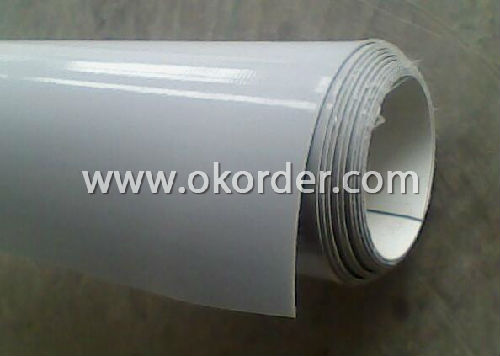
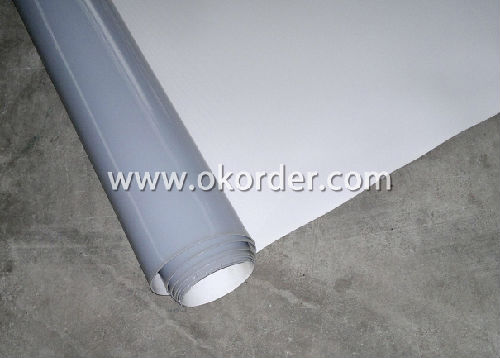
- Q: It is good for black roof with waterproof paper
- Roof waterproof selection is generally: SBS modified asphalt waterproofing membrane and self-adhesive waterproofing membrane.
- Q: Are waterproofing membranes resistant to sulfuric acid exposure?
- Yes, waterproofing membranes are generally resistant to sulfuric acid exposure. These membranes are designed to provide a barrier against water and other chemicals, including sulfuric acid. However, the level of resistance may vary depending on the specific type and quality of the membrane. It is advisable to consult with manufacturers or experts to ensure the membrane's compatibility with sulfuric acid exposure in specific applications.
- Q: Are waterproofing membranes resistant to saltwater?
- Waterproofing membranes, in general, possess resistance to saltwater. Their purpose is to establish a barricade that hinders water infiltration into surfaces such as roofs, walls, or foundations. These membranes are created using materials like rubber, polyethylene, or PVC, which have an inherent ability to withstand the corrosive impact of saltwater. This resistance enables waterproofing membranes to adequately safeguard structures and surfaces against water-induced harm, even in saltwater surroundings. Nonetheless, it is crucial to select a waterproofing membrane specifically tailored for saltwater applications in order to guarantee optimal effectiveness and durability.
- Q: Can a waterproofing membrane be used in areas with extreme weather conditions, such as hurricanes or snowstorms?
- Yes, a waterproofing membrane can be used in areas with extreme weather conditions, such as hurricanes or snowstorms. Waterproofing membranes are designed to provide a protective barrier against water infiltration and can effectively withstand various weather conditions. They are made from materials that are resistant to moisture and can be installed in different areas like roofs, basements, or foundations. In regions prone to hurricanes, waterproofing membranes can help prevent water damage by creating a barrier that keeps water out even during heavy rainfall or storm surges. These membranes are often reinforced and have high tensile strength to withstand the strong winds and pressure associated with hurricanes. Similarly, in areas with heavy snowstorms, waterproofing membranes can help prevent water intrusion caused by melting snow or ice dams. They are designed to be flexible and resistant to extreme temperatures, ensuring that they maintain their integrity and prevent leaks even in freezing conditions. However, it is important to choose the right type of waterproofing membrane suitable for the specific weather conditions in the area. Different membranes have varying levels of resistance to extreme weather, so it is advisable to consult with a professional to determine the most appropriate membrane for the specific climate and weather patterns. Additionally, proper installation and regular maintenance are crucial to ensure the longevity and effectiveness of the waterproofing system in extreme weather conditions.
- Q: Is a waterproofing membrane resistant to hydrocarbons or oil spills?
- Yes, a waterproofing membrane is generally resistant to hydrocarbons or oil spills.
- Q: Are waterproofing membranes resistant to chemicals?
- Yes, waterproofing membranes are generally resistant to chemicals. These membranes are designed to provide a protective barrier against water infiltration and are typically made from materials such as PVC, TPO, or EPDM which have excellent chemical resistance properties. They are specifically engineered to withstand exposure to various chemicals, including acids, alkalis, solvents, and oils, without deteriorating or being damaged. This chemical resistance ensures that waterproofing membranes can maintain their integrity and effectiveness in environments where chemical exposure is common, such as industrial settings, laboratories, or chemical storage areas. However, it is important to note that the specific chemical resistance capabilities can vary depending on the type and quality of the waterproofing membrane, so it is crucial to choose the appropriate membrane that suits the specific chemical exposure requirements of the project.
- Q: Can waterproofing membranes be used on concrete tunnels?
- Concrete tunnels can benefit from the use of waterproofing membranes. These membranes are commonly employed to prevent water infiltration in various structures, including concrete tunnels. They are applied on the outside of the tunnel walls and can be made from different materials like bitumen, PVC, or EPDM. Their purpose is to stop water from seeping through the concrete. By creating a waterproof layer, these membranes safeguard the tunnel against water damage, such as corrosion, decay, and leaks. Moreover, they act as a protective shield against other sources of moisture, like groundwater or surface water. It is crucial to select a suitable waterproofing membrane that matches the specific conditions and requirements of the concrete tunnel, taking into consideration factors such as water pressure, chemical exposure, and temperature changes. To ensure the effectiveness and long-term durability of the waterproofing membrane in safeguarding the concrete tunnel from water ingress, proper installation and regular maintenance are essential.
- Q: Can a waterproofing membrane be used on glass block surfaces?
- Yes, a waterproofing membrane can be used on glass block surfaces. Glass block surfaces are often used in areas such as bathrooms or kitchens where waterproofing is essential to prevent water damage. Applying a waterproofing membrane helps to create a barrier that prevents water from penetrating the glass blocks, protecting the underlying structures and materials. The membrane is typically applied to the exterior side of the glass block surface, ensuring that any water that comes into contact with the surface is directed away and does not seep through. It is important to choose a waterproofing membrane that is specifically designed for use on glass block surfaces to ensure proper adhesion and long-lasting protection.
- Q: Can a waterproofing membrane be used in conjunction with expansion joint systems?
- Yes, a waterproofing membrane can be used in conjunction with expansion joint systems. The membrane can be applied over the expansion joint system to provide an additional layer of protection against water penetration, ensuring the longevity and effectiveness of the joint system.
- Q: How does a waterproofing membrane handle expansion and contraction of the substrate?
- To effectively handle the expansion and contraction of the substrate, a waterproofing membrane is engineered to be flexible and elastic. It can stretch or shrink in accordance with temperature changes or other factors without experiencing any damage or failure. The flexibility of the membrane allows it to adapt to the movements of the underlying substrate, ensuring its integrity and complete functionality. This adaptability is achieved by utilizing materials with excellent elongation properties, such as modified bitumen, rubberized asphalt, or synthetic polymers like PVC or TPO. Moreover, a waterproofing membrane possesses a strong tensile strength, which enables it to withstand the stress caused by expansion and contraction without tearing or breaking. This strength is paramount in preventing water infiltration or moisture damage to the substrate. Additionally, during the installation of a waterproofing membrane, it is common practice to overlap or interlock the membrane sheets. These overlapping seams provide added protection against any potential substrate movement. If the substrate expands or contracts, the overlapping seams allow the membrane to accommodate the movement while maintaining a continuous and watertight barrier. In summary, a waterproofing membrane is specifically designed to effectively manage substrate expansion and contraction. Its flexibility, high tensile strength, and overlapping seams work together to ensure its durability, reliability, and efficacy in preventing water penetration, even as the substrate undergoes movement.
1. Manufacturer Overview
| Location | Shandong, China |
| Year Established | 2003 |
| Annual Output Value | Above 50 Million RMB |
| Main Markets | Mid East; Eastern Europe; North America; Southeast Asia |
| Company Certifications | ISO 9001; ISO 14000 |
2. Manufacturer Certificates
| a) Certification Name | |
| Range | |
| Reference | |
| Validity Period |
3. Manufacturer Capability
| a) Trade Capacity | |
| Nearest Port | Tianjin; Qingdao |
| Export Percentage | 10% |
| No.of Employees in Trade Department | 5-10 People |
| Language Spoken: | English; Chinese |
| b) Factory Information | |
| Factory Size: | Above 2000 square meters |
| No. of Production Lines | Above 5 |
| Contract Manufacturing | OEM Service Offered; Design Service Offered |
| Product Price Range | Negotiated |
Send your message to us
0.5MM-2MM TPO Roofing Membrane Waterproof Material
- Loading Port:
- Qingdao Port
- Payment Terms:
- TT or LC
- Min Order Qty:
- 1*20'GP m²
- Supply Capability:
- 20Containers per Month m²/month
OKorder Service Pledge
OKorder Financial Service
Similar products
Hot products
Hot Searches
Related keywords
